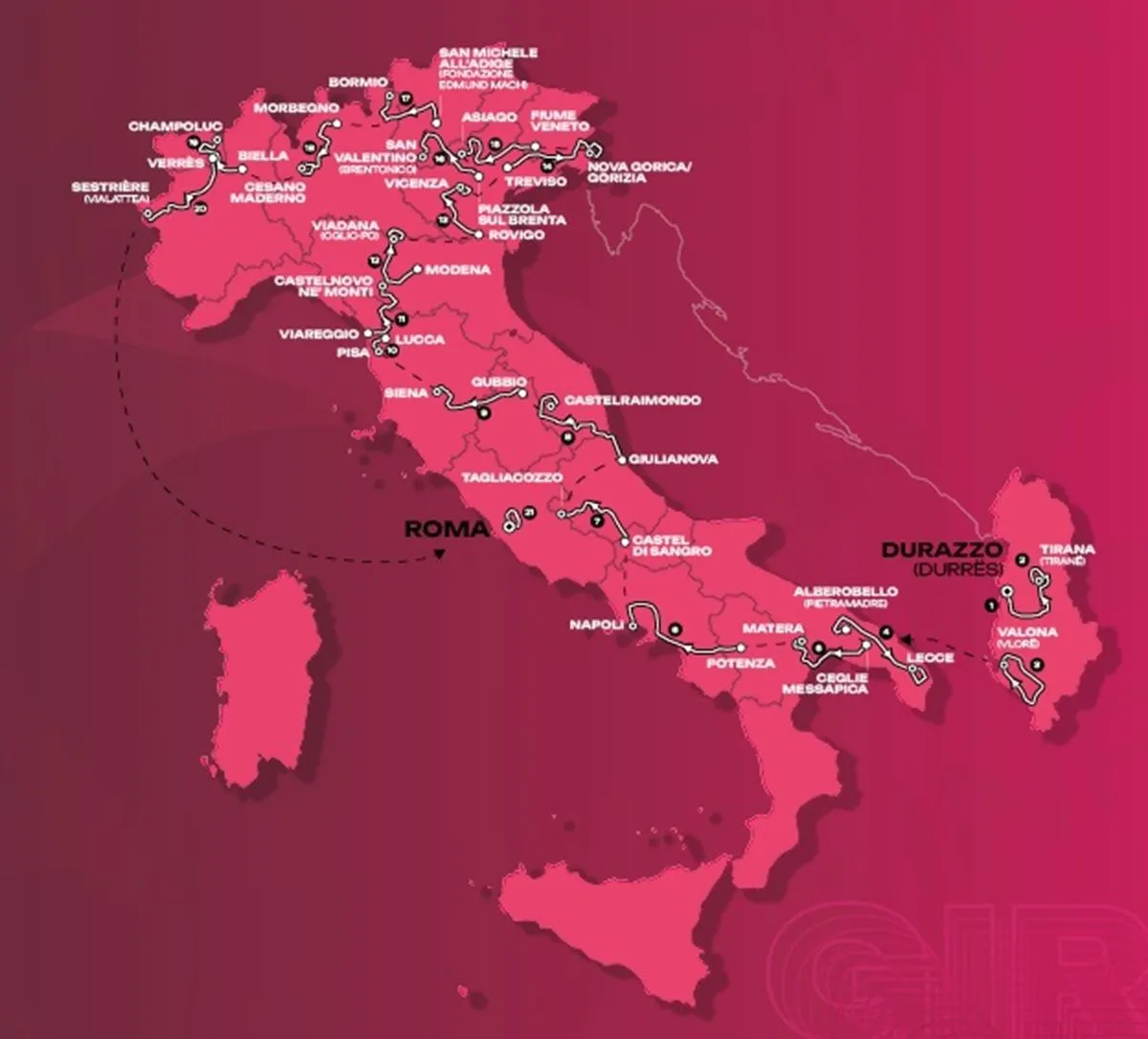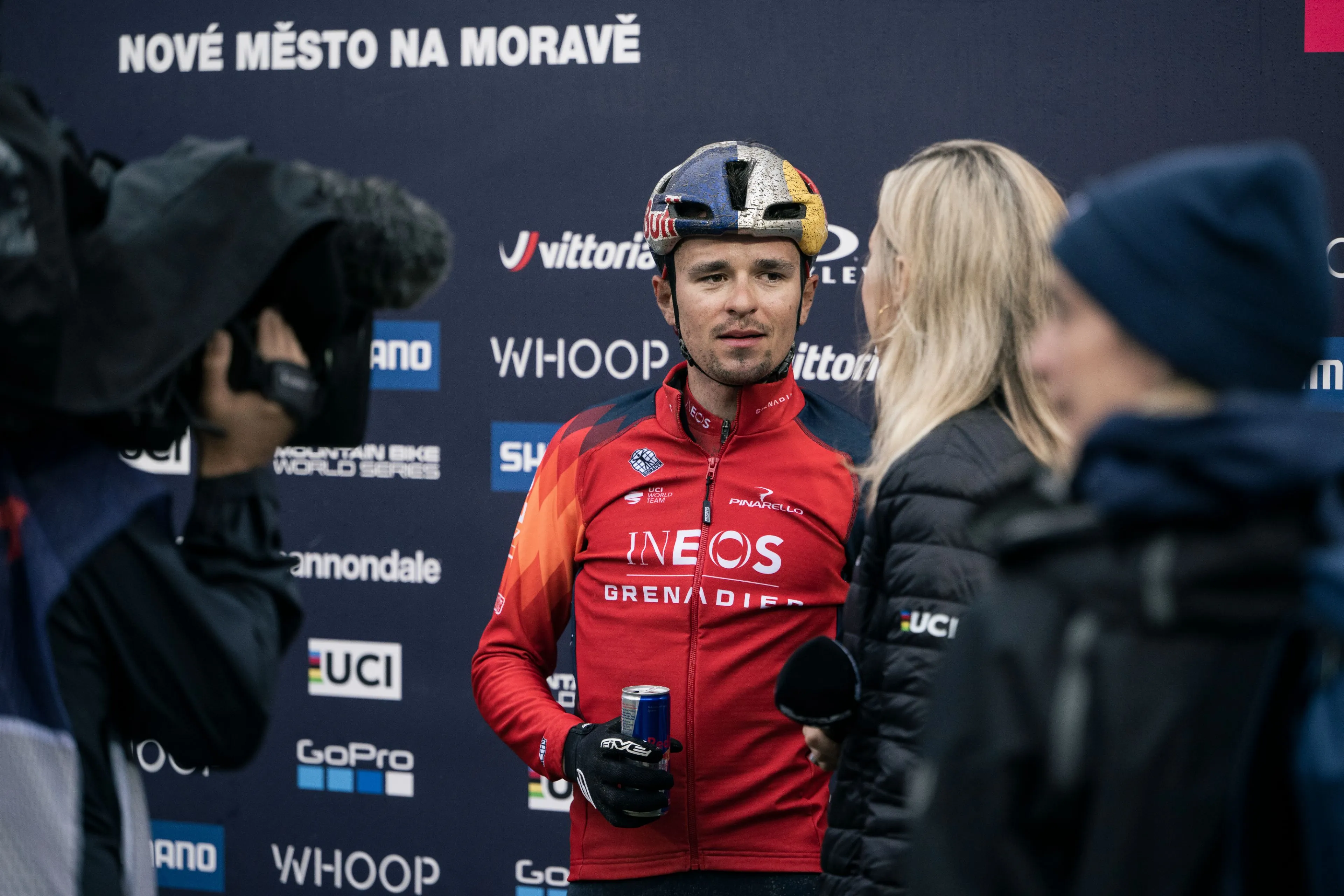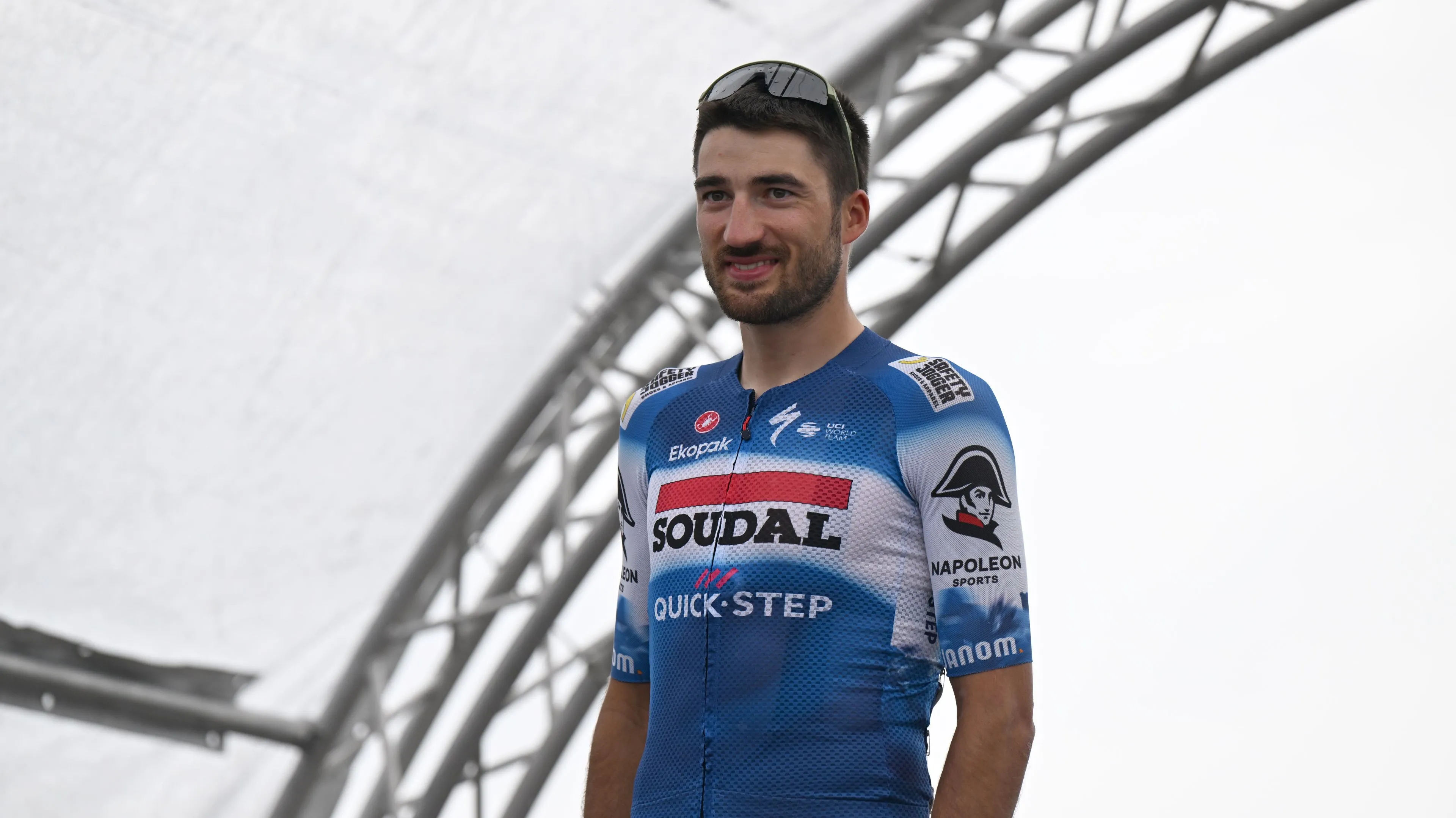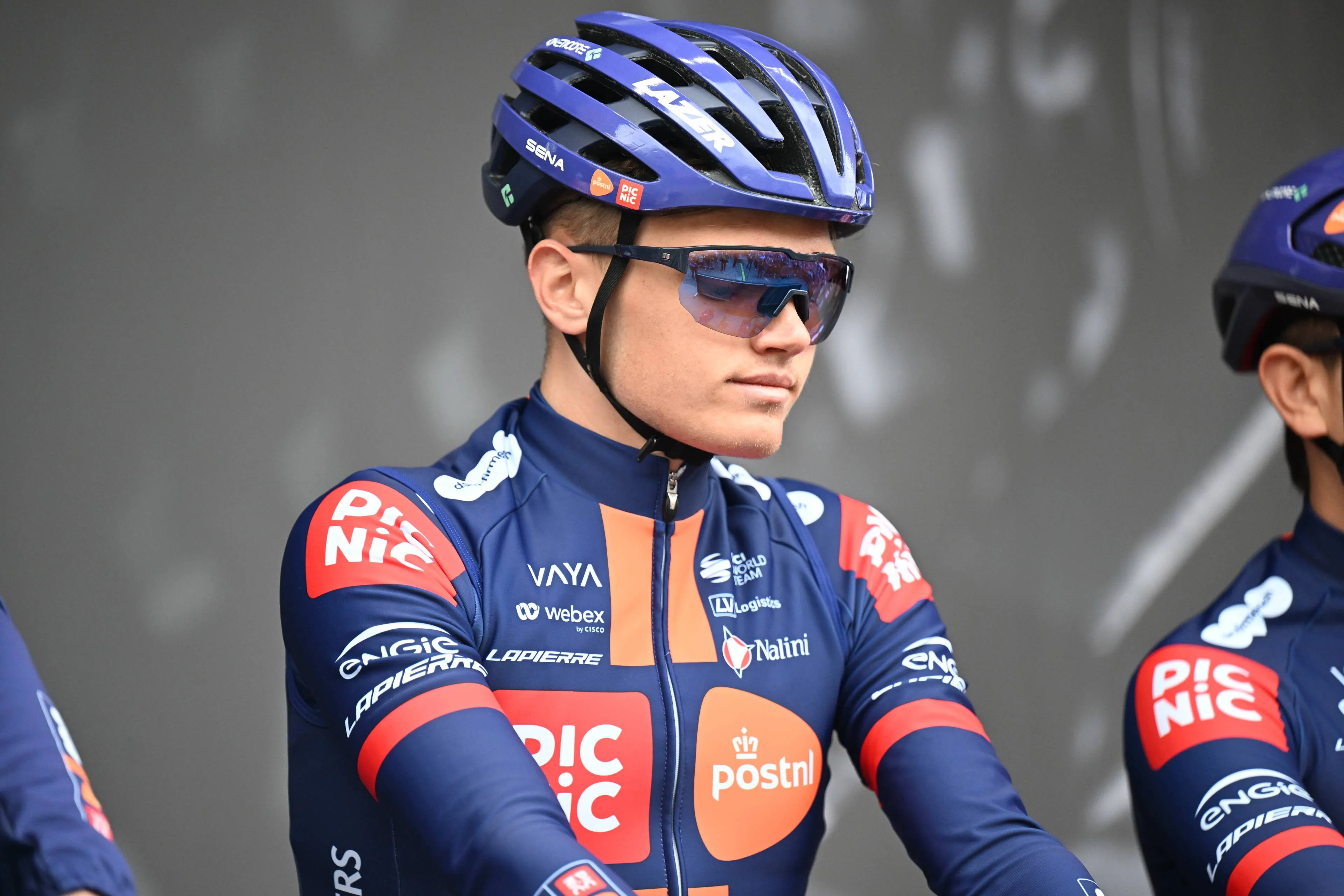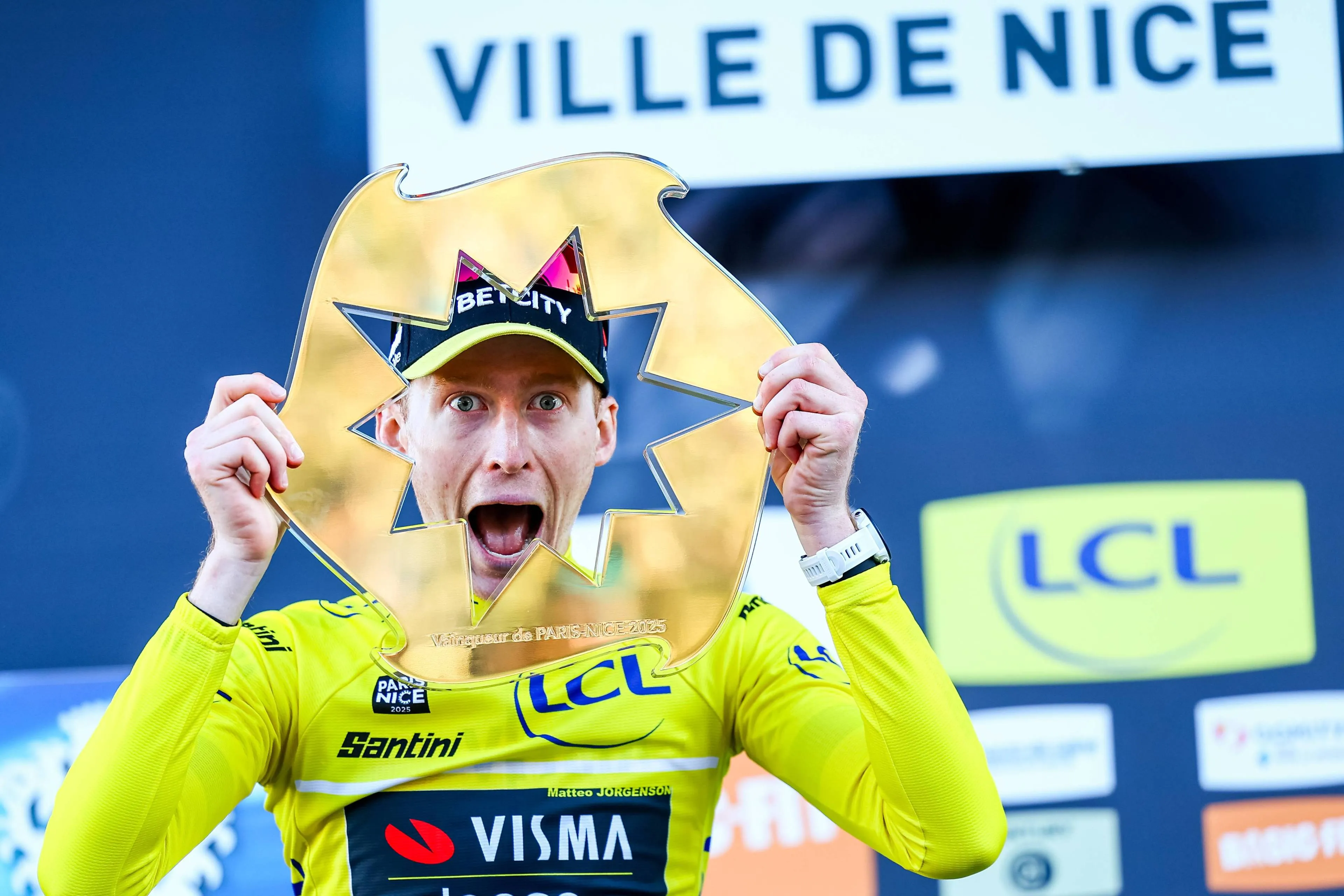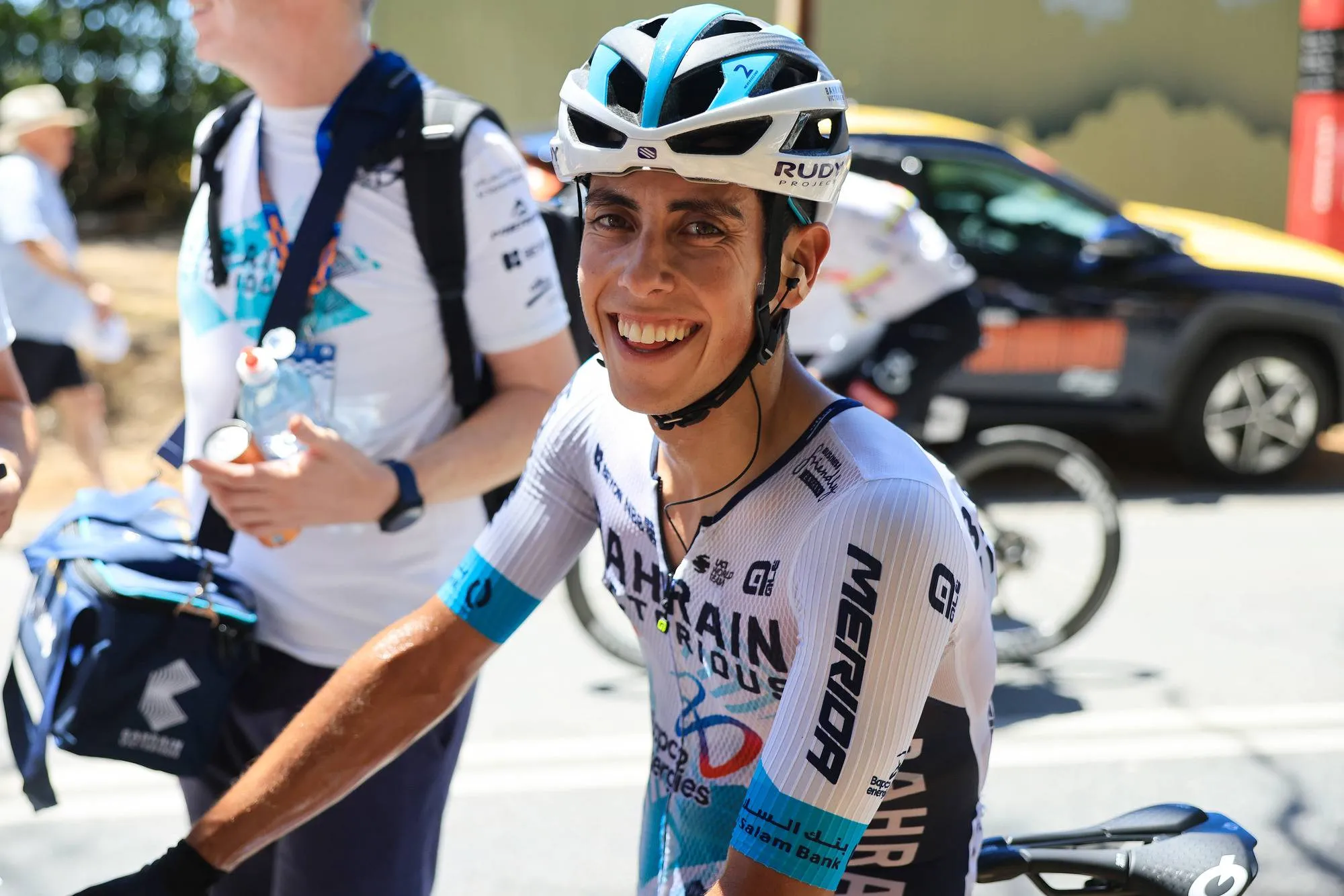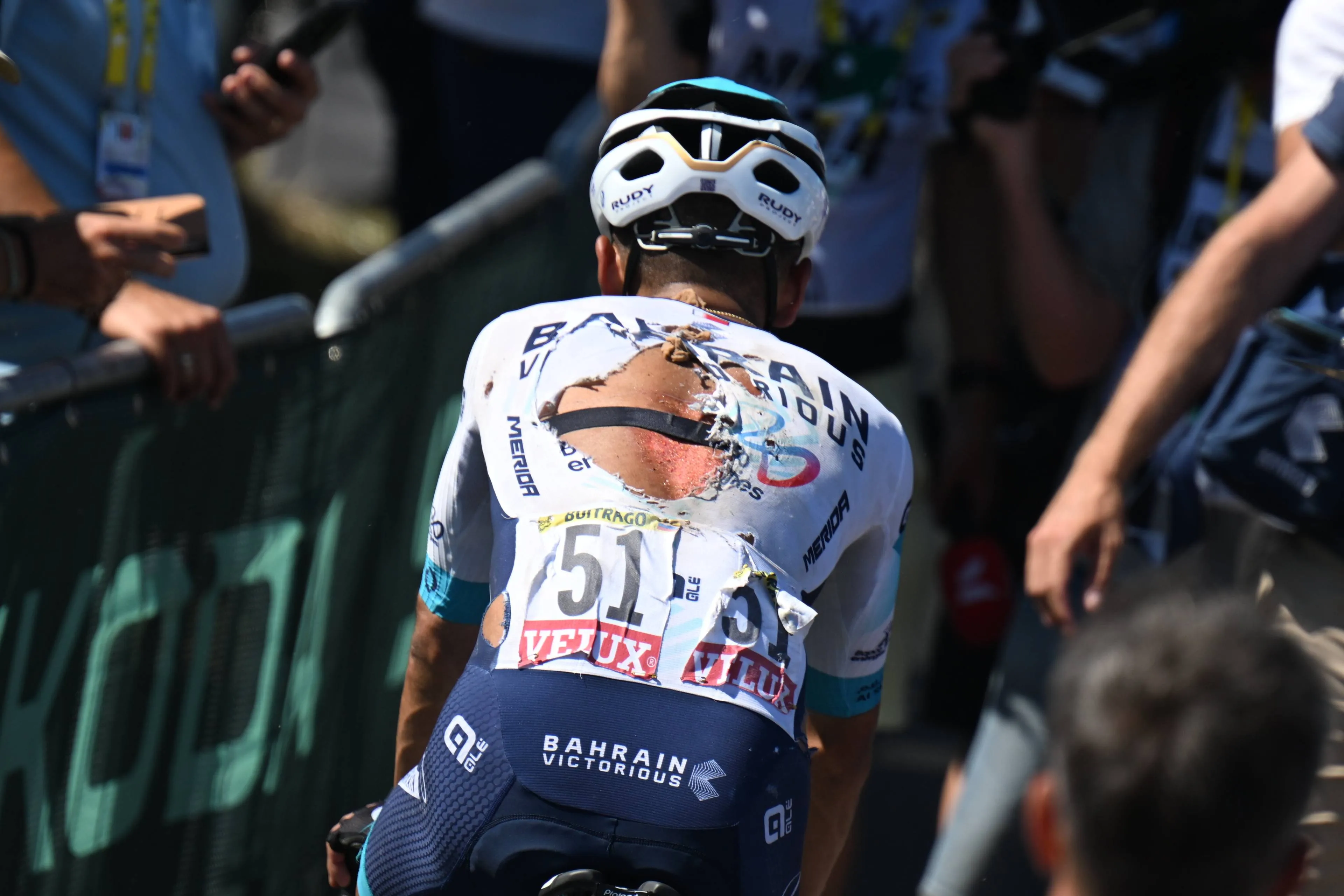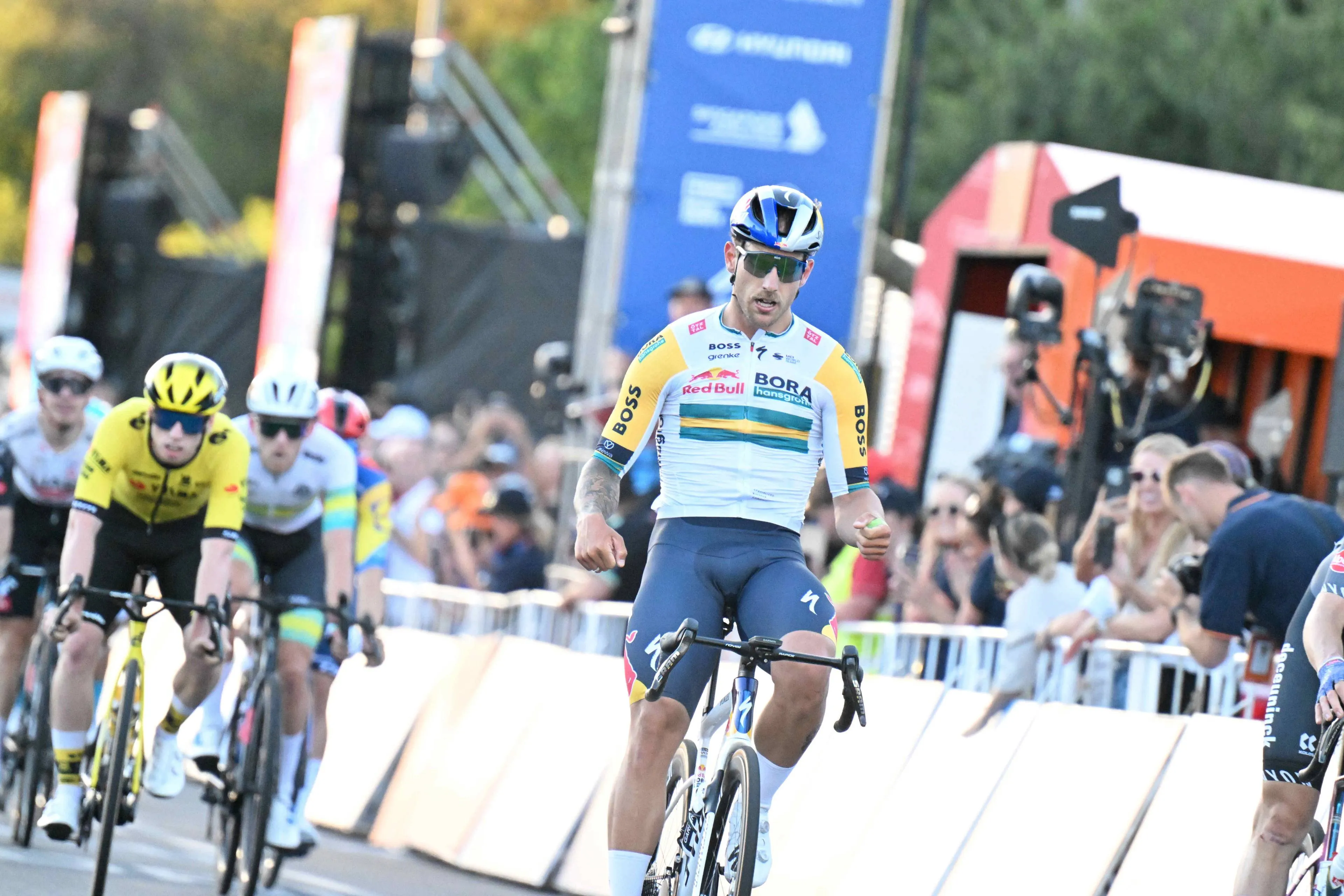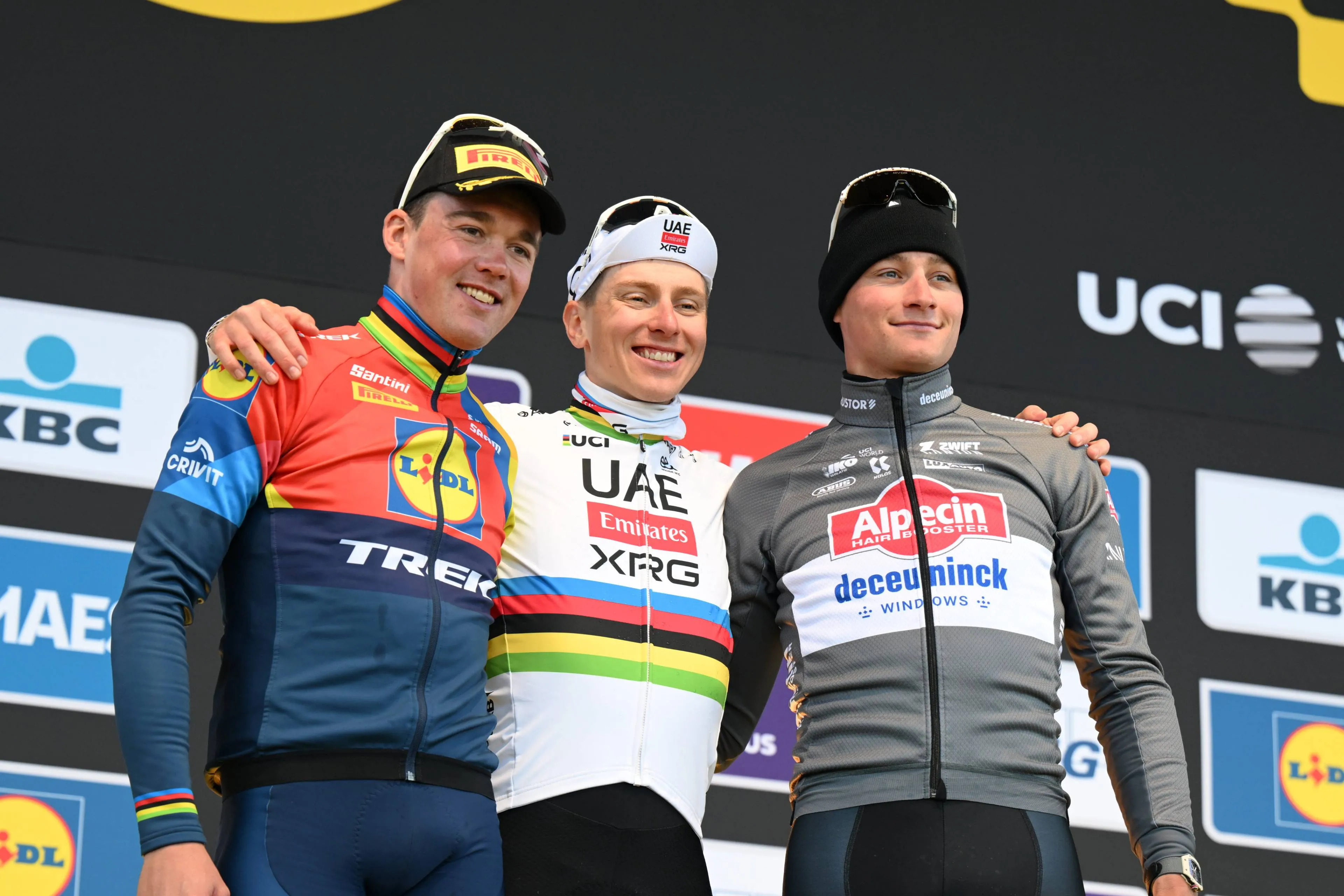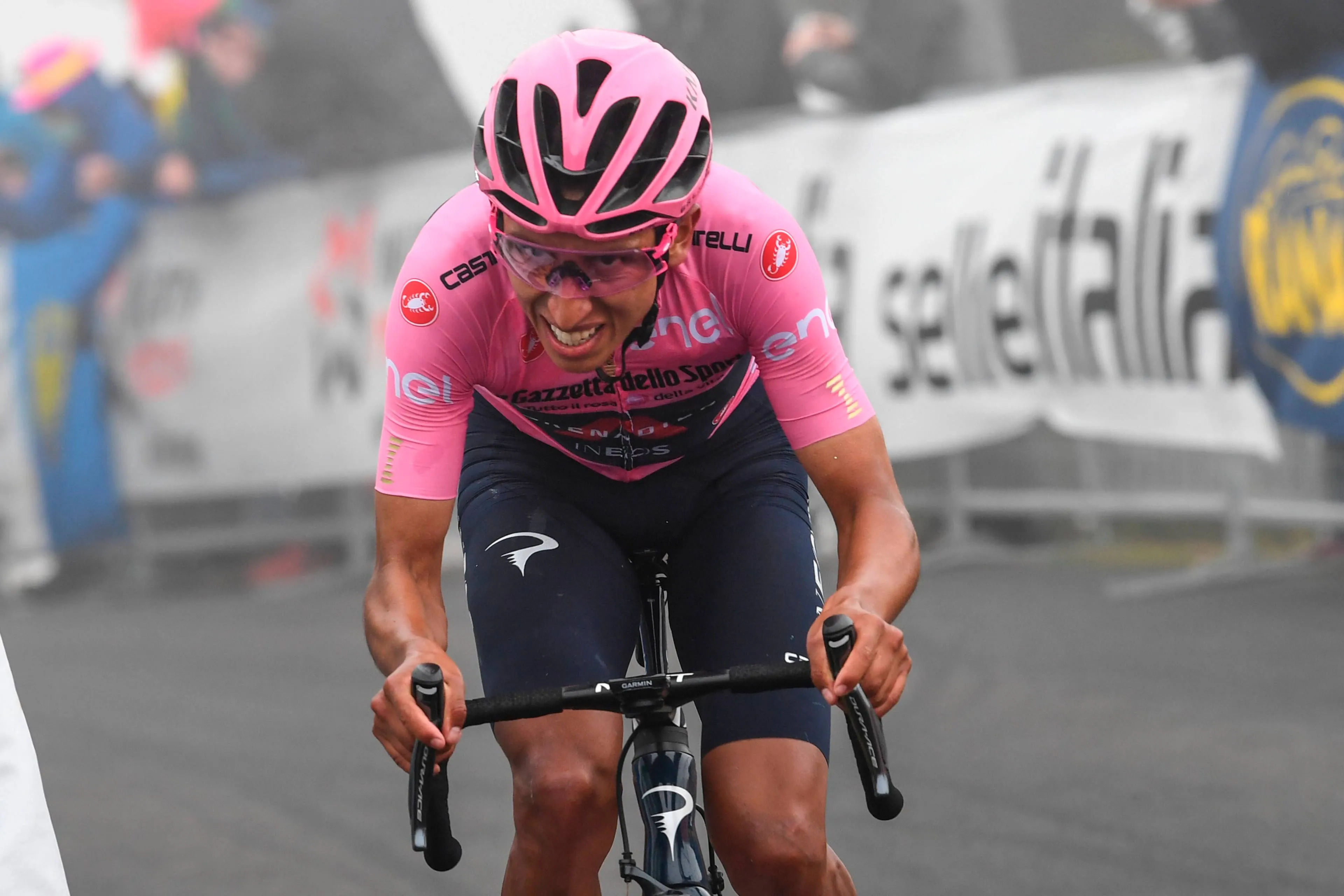Pedal Punditry #18 - Let them cook... The 2025 Giro d'Italia route looks good and should provide more action than the Tour and La Vuelta
CyclingWednesday, 15 January 2025 at 11:11
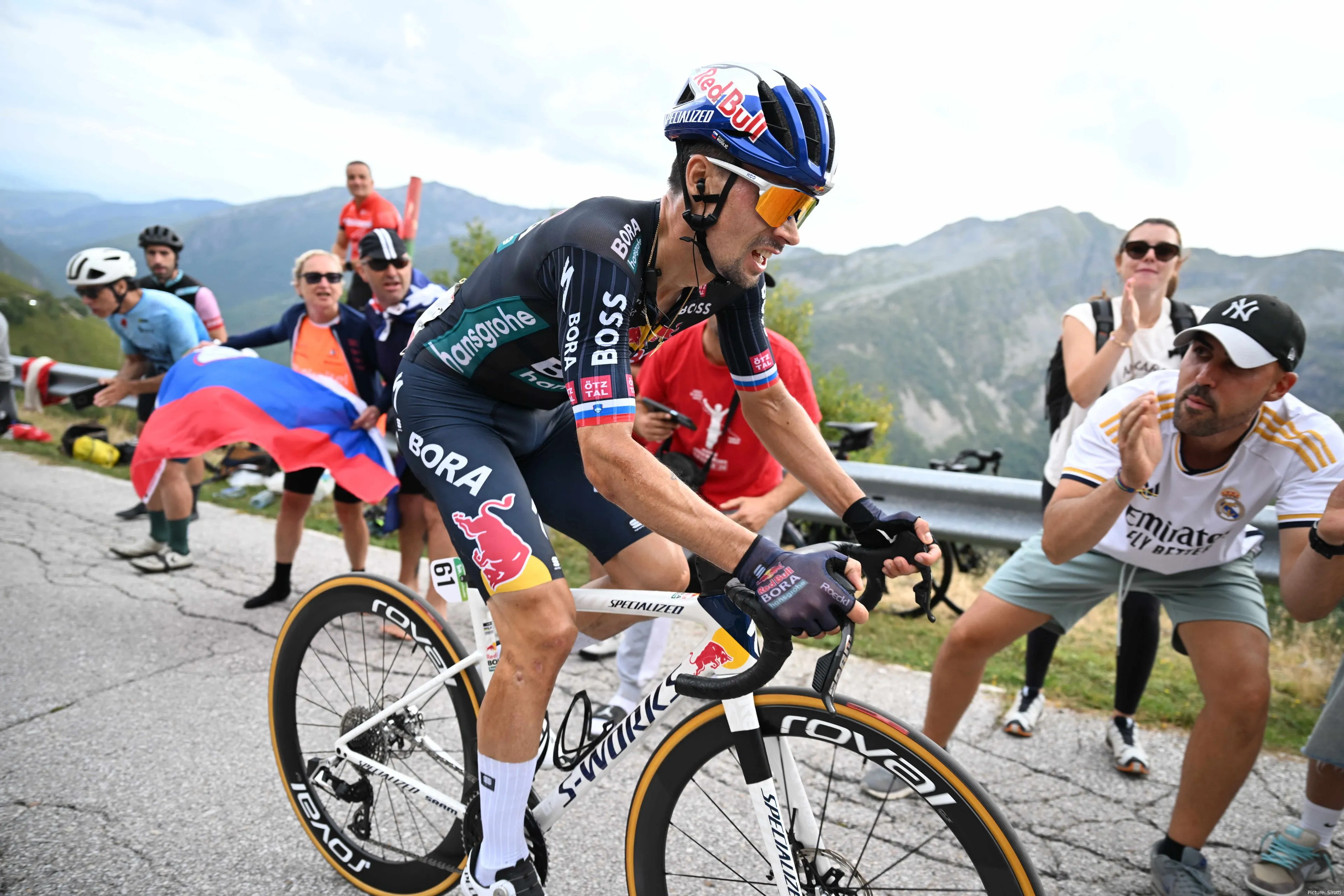
The route of the Giro d'Italia has been revealed. It's very different from the Tour de France and Vuelta a España, it has it's pros and cons but at the end of the day I think the organizers have made a good job creating a route with the chance for surprises - which, alongside a startlist that may not have the 'big stars', could make way for an exciting Grand Tour with no clear favourite unlike what has been the usual in recent years.
In good old Italian fashion, the presentation started 20 minutes late, after being postponed by two months back in November. It was meant to be the first Grand Tour to be presented initially, but reportedly rough negotiations with the Albanian delegation forced a delay. This wouldn't have affected the riders' decisions, as a few riders who will race the Giro d'Italia have already confirmed their presence in Strade Bianche despite the fact that they are riders who do not usually compete in such event - Mikel Landa and David Gaudu for example. This means that the riders and teams were informed of the route, which besides the Albania section, was already decided on back in December. You can see all stage profiles at the end of this article.
Read also
Albania
I'm a fan, obviously having the sport expand to a country in such way is always a positive situation, but having the Grande Partenza in Albania is an exciting risk. A small nation that lacks the wealth of most of Italy's neighbours, lacks the extensive cycling tradition or even total area, but made their bid and got accepted. For the first time in history the country will have a Grand Tour on their roads which can trigger a movement in the country, but additionally it can throw surprises as at the moment there are no big UCI races in the country and no-one will quite know what to expect until the riders make it there.
Ultimately the agreement was made, and the race starts with a hilly stage into the capital of Tirana. Difficult enough for late attacks to possibly succeed, with a pink jersey on the line, it will give hopes for many to attacks the final circuit that features a 5-kilometer climb at around 5/6%. Attacks will come, but we should have a reduced bunch sprint. Either ways it will be an open finale, which ideal for the opening stage of a Grand Tour. Stage 2, the hilly time-trial in Tirana, is a logical option - as they've done with Budapest, a similar Grande Partenza - as a way to showcase the city but also put on some exciting action and open up the GC fight.
Stage 3 is also a day which CAN end in a sprint, but that's if the riders want. A breakaway can win, the pink jersey may change ends, and we may have everything from a GC fight to a reduced bunch sprint. The stage features a 10-kilometer climb at over 7% less than 40 kilometers from the finish, it's impossible that no-one will use it, either to attack or drop rival sprinters.
Read also
Return to Italy
2024 saw Pogacar attack on stage 1, win on Monte Oropa on stage 2, win a time-trial and then win a tough summit finish at Prati di Tivo... This time around, like the Tour de France, the Giro organizers decided on having a more gentle and open first week. Stage 4 is for the sprinters, stage 5 is likely a sprint day but with the hilly element added to it, stage 6 should be for the sprinters but there are enough hills to create the threat of a breakaway day... Stage 7 features the first summit finish of the race but it doesn't overpromise, it's not going to be a decisive day, but one where only in the final 2 kilometers (that average 10%) will there be much action. Stage 8 is a traditional breakaway day which keeps the GC powder relatively dry into stage 9 where there will be fireworks all over the place.
Without any big decisive GC day before the 'Strade Bianche' stage, it means we should still have around two dozen riders aiming to finish high on the GC, increasing the tension for all riders present. The 30 kilometers of gravel and serious climbing mean this will be a full-on GC day, it's not a "soft gravel" day where the riders can tag along the wheels and make it if they're lucky. No there will be gaps, positioning will be key from very early on, and the GC riders will depend a lot on team support. But still, regardless of what happens before, the climb to Via Santa Caterina and finale into the Piazza del Campo is always beautiful and thrilling, and on those 16% ramps there will still be moves from the GC men amongst each other if they go in together. But this is a stage where besides the GC fight, we may have another fight for the stage win between those who have the freedom to go for themselves. It's a rare combination in Grand Tours, and one that's not often achieved in any of them. I think the stage fits perfectly here, specially on a Sunday afternoon and with a rest day the week before.
Read also
Week 2 doesn't explode the race, but that's not bad...
Week 2 is a mixed feelings bag, but it doesn't wreck the race. Hell, think of 2024, where at the end of week 2 you would have already understood perfectly that Tadej Pogacar would win both the Giro and Tour respectively, and the last week well, it was just there and nothing new happened (the Vuelta would be the same if it weren't for Ben O'Connor to enter it with some minutes of lead over Primoz Roglic). Stage 10 is a time-trial of 28 kilometers. Honestly, I understand the desire for a 'good old' long time-trial but the truth is that if you put a Roglic against let's say Simon Yates, over 50 kilometers you get a 3-minute gap that is then impossible to recover. Pogacar, Vingegaard, Roglic, Evenepoel, Ayuso, Almeida... All the big GC riders currently are huge TT specialists and they will simply decimate the competition whilst not losing time in the mountains... So as much as I hate to say it, I do want few TT kilometers in Grand Tours currently.
Stage 11 features an insanely hard climb to San Pellegrino, which could remain relatively conservative for the GC fight because the finale is not so difficult. But all it takes is 1 rider to want it... and everything can erupt. I remember several instances last Vuelta a España where Richard Carapaz wanted to attack and EF, without having a strong team backing him up, pushed just enough for him to launch an attack and erupt the race. He will likely be at this Giro as well, but if we do not have Pogacar, Vingegaard and Evenepoel, then I'd say there won't be one rider above the rest, and this can definitely happen. Like others in this Giro, this is a stage where teammates can be launched to the breakaway and then have a real impact.
Stage 12 is for the sprinters, stage 13 will be an interesting punchy hilltop finish where puncheurs, sprinters and GC men will all battle for the victory, whilst stage 14 goes into Slovenia also with an interesting finale. The final stage of the second week is a copy paste finale of the final mountain stage of the 2017 Giro, a memorable edition. There, Nairo Quintana in pink looked to attack Tom Dumoulin who was close to him on GC and threatened to take the race GC on the final day in the TT (which ultimately happened). Monte Grappa will be ridden through an easier side than 2024, but adding that to Dori can see attacks if the riders want. On that day there was a mythical battle on the climb and then two groups of 5/6 riders chasing each other in the final flat kilometers. It was a crazy and exciting finale and we have the right to dream of something similar. If the attacks don't make the difference on the climb itself, the lack of a descent and flat finale can see a lot of tactical moves.

Will the "famous" Mortirolo stage deliver action or be a bust?
For the first time since 2023 the Grand Tour will only be decided on week 3
This can be a bad thing, the 2023 Giro is a good example where the final time-trial was thrilling but the majority of the race simply did not deliver. But this time around the stages don't make it convenient to ride conservatively. Stage 16 immediately hits very hard with a combination of many climbs and a very tough summit finish in San Valentino where differences are certain. This final week has four mountain stages, it's a backloaded Giro and the biggest differences will be created in the final stages which leaves a lot of suspense until then, and a chance to grow into the race instead of peak form from the start.
Stage 17, going over the Passo del Tonale and Passo del Mortirolo is perhaps the one I've seen most criticism of, but I like it. I would've liked it to be the harder side of the Mortirolo, but this could be enough. It's another day for long-range attacks, an extremely fast and technical descent and then a slight uphill finale where team tactics and breakaway men can prove crucial. It's not a "W/Kg" battle but instead if something out of the ordinary happens, teams have to use their heads a lot more. This stage, like stage 11, is a good example of a day where anything can happen, and all it takes is 1 rider to have an idea. Besides, the Giro often has cold temperatures and specially rain added to the mix, which can turn a day like this into a queen stage. Stage 18 is the traditional "final flat day before stage 21" and it features some climbs, ordinarily we have an exciting breakaway vs peloton battle on this day and this year should go again.
Stage 19 is a monster, climbing from start to finish, with three tough climbs on the Valle d'Aosta where the descents are always technical. It's an endurance day, like no other in the race, a new test on the penultimate competitive day which may chance things around. It's the kind of day where someone like Vincenzo Nibali or Nairo Quintana would really take over in their prime, as riders who handled the long mountain days and the third week very well. The toughest stages of this race are stages 19 and 20 in my opinion and we may see this again.
Stage 20 doesn't have as much accumulate as some others, but the 200 kilometers and Colle del Lys before hitting the Colle delle Finestre means fatigue will be present and on the toughest climb of the race. Maybe I would've preferred this stage earlier in the week, but it fits as a final mountain day. Finestre is the toughest climb of the Giro and in 2018 the pink jersey completely cracked there. Such a tough ascent at the end of a long race and day can make for cracks in the armour and there's time to take back minutes on the competition... Having Sestriere after the Finestre (where the GC fight will happen) will prolong this battle.

Riders will cross the 2000-meter altitude mark for the first and only time at the Colle delle Finestre on stage 20
Better than the Tour and Vuelta?
In my opinion yes, with no doubt. The Tour returned to a traditional route this year with plenty punchy stages and days for the classics riders in week 1, which I love. But they also inserted five mountain stages and every single one has a tough summit finish and are unlikely to see attacks before it. It will be a W/Kg test in every single one of them and non-ironically the climbs are all of similar lengths and gradients, there's no real room for surprise. And in Spain, a country with so many mountains, with brutal hills, with narrow roads... They built a route where the GC should be decided by the end of week 2 as half the race is made of summit finishes and we've got the Angliru and Farrapona on stages 13 and 14. The final week does have stage 16 where excitement can happen, but that day would be better used on the final competitive stage as in 2021. The finale in Bola del Mundo is disappointing, it's a beautiful climb, but the final opportunity to really turn the race around with an attack is on stage 16.
The Giro usually uses high altitude as a different challenge, this year it's not the same, only one climb above 2000 but it's in Finestre (again, on the final competitive day, which throws in a new element all the way to the end, a good thing) where it doesn't usually snow much. Honestly I love high altitude stages but now almost every single year stages are cut or cancelled because of the weather conditions and the snow, and it's just inevitable that this is now the new normal and won't be changed whilst the Giro continues to be in May.
This Giro route features a proper Strade Bianche stage that will be an absolute blast, it has a route that should maintain the GC fight very open until quite late, it has stages with very hard climbs far from the finish where anything can happen, it has big colossal mountain days packed with climbs, it keeps adding new obstacles and elements all the way into stage 20... But it doesn't sacrifice explosive finales such as the Albanian start or the Monte Berico stage where you'll have a mix of all kinds of riders fighting for the win. It just clicks, I give it an 8/10, personally there isn't much I would change. Also it breaks the very annoying trend of both Tour and Vuelta which is to make mountain stages shorter and shorter, no, here endurance is important as we've got mountain days in the 200 kilometers and this just increases the chances of riders cracking wherea
The route presents a lot more opportunities, mystery and openness than the Tour de France and the Vuelta a España, and taking into consideration that Tadej Pogacar should be racing both, it is very likely that we'll have a lot more tension for the race lead at the Giro (although a lot depends on Jonas Vingegaard's decision to race the Corsa Rosa).
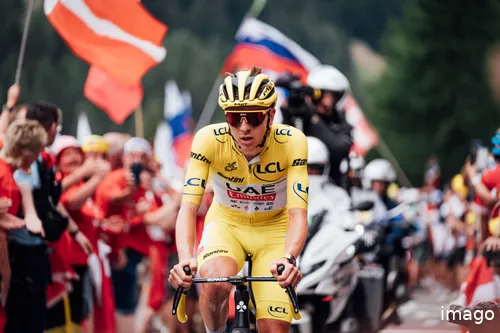
Tadej Pogacar was on a league of his own at both Giro d'Italia and Tour de France in 2024, and there was little tension as to who'd win the Grand Tours. @Imago
Stage 1

Durazzo - Tirana, 164 kilometers
Stage 2 (ITT)

Tirana - Tirana, 13.7 kilometers
Stage 3
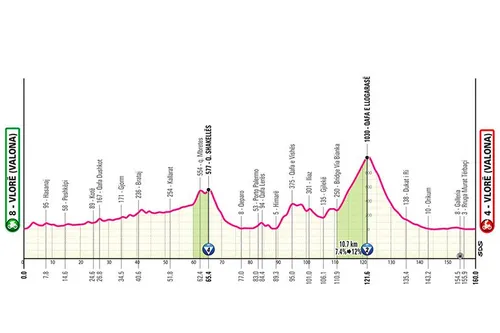
Valona - Valona, 160 kilometers
Stage 4

Alberobello - Lecce, 187 kilometers
Stage 5

Ceglie Messapica - Matera, 145 kilometers
Stage 6

Potenza - Napoli, 210 kilometers
Stage 7

Castel di Sangro - Tagliacozzo, 168 kilometers
Stage 8
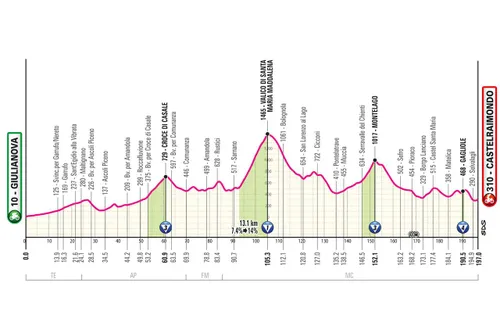
Giulianov - Castelraimondo, 197 kilometers
Stage 9

Gubbio - Siena
Stage 10 (ITT)
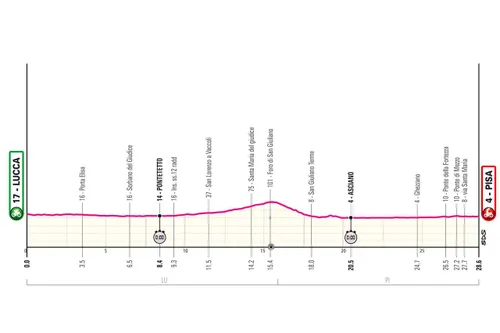
Lucca - Pisa, 28.6 kilometers
Stage 11

Viareggio - Castelnuovo Ne Monti, 185 kilometers
Stage 12
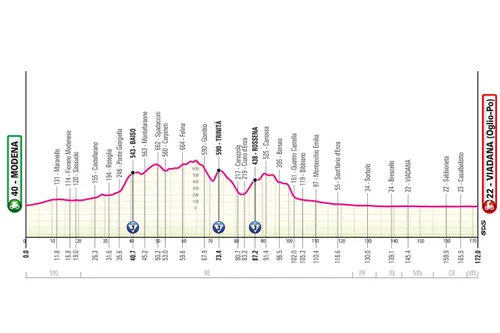
Modena - Viadana, 172 kilometers
Stage 13

Rovigo - Vicenza (Monte Berico), 180 kilometers
Stage 14

Treviso - Nova Gorica, 186 kilometers
Stage 15
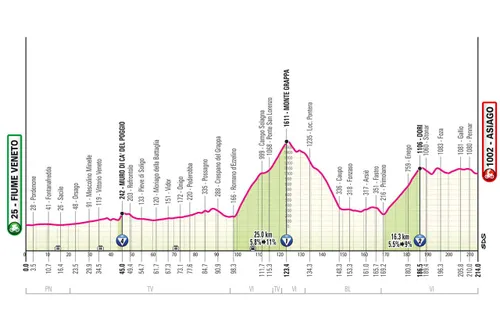
Fiume Veneto - Asiago, 214 kilometers
Stage 16
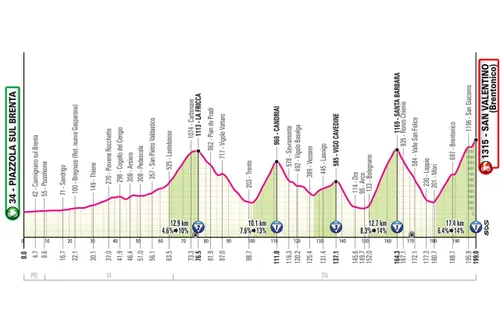
Piazzola sul Brenta - Brentonico (San Valentino), 199 kilometers
Stage 17

San Michele all'Adige - Bormio, 154 kilometers
Stage 18

Morbegno - Cesano Maderno, 144 kilometers
Stage 19

Biella - Champoluc, 156 kilometers
Stage 20

Verres - Sestriere, 203 kilometers
Stage 21

Roma - Roma, 141 kilometers
claps 0visitors 0
Just in
Popular news
Latest comments
- Ah pundits….those who cannot do, fill air time and column inches criticizing those who can… Eddy Merckx wins all the races…cycling is boring and sucks nowCrashjames17-12-2025
- Boring to see a generational talent in your own life time? We should all feel privileged to see it. I certainly do. I feel the same when I see other once in a life time amazing guys in other fields rewriting the record books: Magnus Carlsen in chess and Shoei Ohtani in baseball. And the way they carry themselves.. humble and respected by their peers adds to their appeal.Santiago17-12-2025
- As a current or ex crosser, you should be asking yourself 'what is VDP doing that I'm not', instead of bellyaching that he's winning everything. It's not boring for me to watch an athlete, at the pinnacle of their career, absolutely pulverised the opposition. Whether it be Tiger Woods, Usain Bolt, Roger Federer or indeed our own Tadej Pogacar. Are cyclists really such a bitter breed that we see excellence as boring? Personally, I'm in absolute awe. Here's a question for Mr Wellens, how long will it take before Thibaut Nys becomes boring, after VDP has hung up his wheels?Pogthegoat17-12-2025
- Monotonous? Boring? Pundit? WTF?MajorPayne17-12-2025
- What a backwards step for this team. First the signing of Ayuso and now every chance of Derek Gee.whit2pet17-12-2025
- and also let’s hope he doesn’t have a wife that goes off on the team and riders.mij17-12-2025
- with all due respect to Welsford, what has he won to deserve the title “ace”. he is there in many sprints, but other than some nationals and maybe a 3rd tier race, he isn’t exactly a feared sprinter in the peloton. of course with the right team he could become a winner, but is Ineos the right team? Unlike a Quick-Step, Ineos is not exactly sprinter friendly. they don’t have a track record of developing winners at sprinting.mij17-12-2025
- Let's hope that he doesn't throw his tantrums on his teammates at Visma.
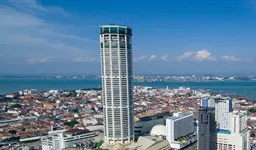 KerisVroom17-12-2025
KerisVroom17-12-2025 - Hopefully it's for more money than his previous year. That said, he also knows that 2 even younger riders with a potentially higher ceiling could replace him. So he's still fortunate to be part of a team that wins.Veganpotter16-12-2025
- No mention to their best cyclist? Paul Magnier. Save my words.
 PAULO16-12-2025
PAULO16-12-2025
Loading
Write a comment
